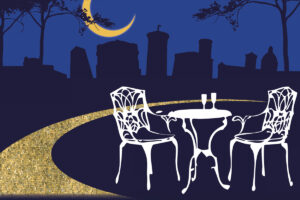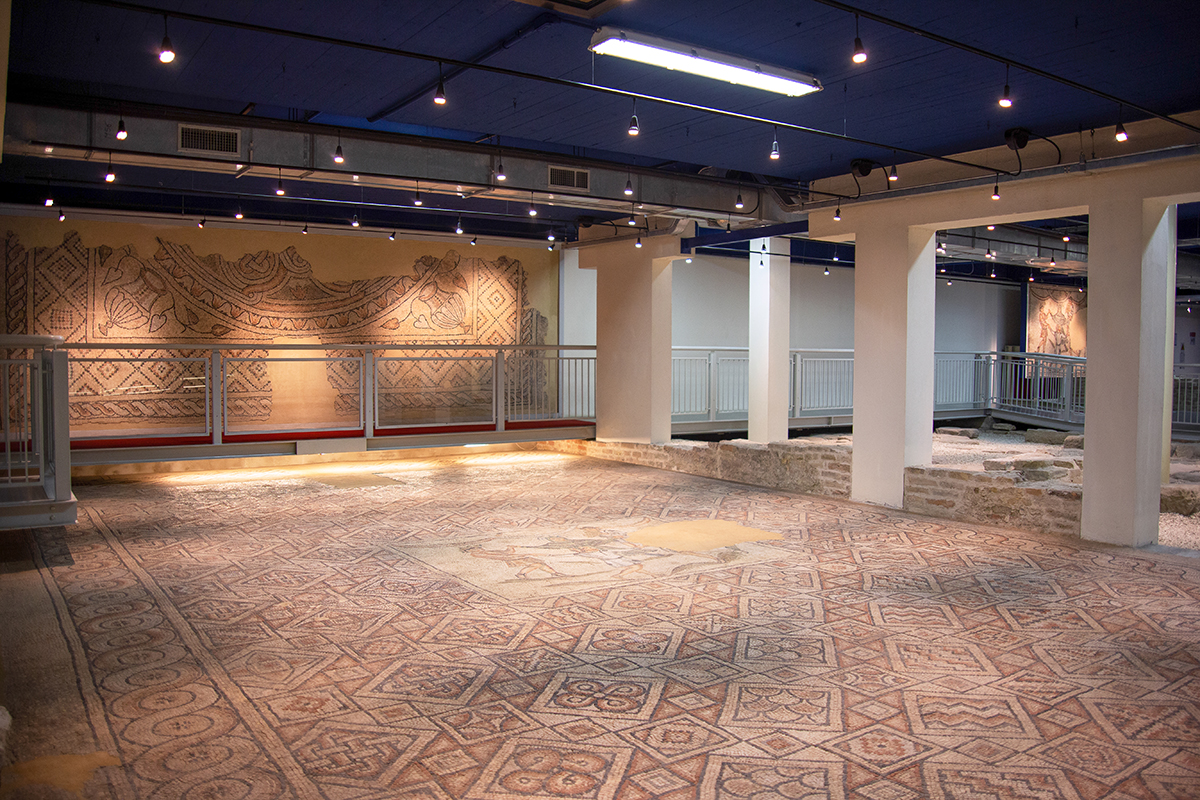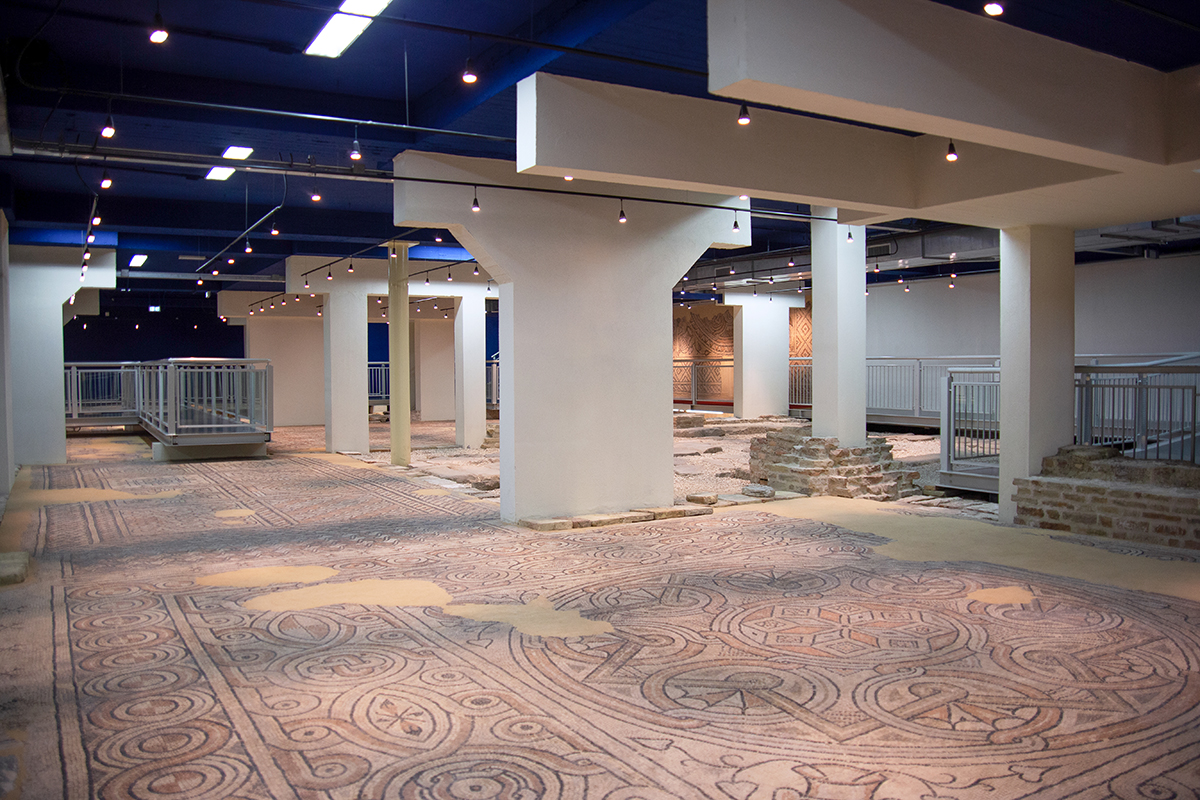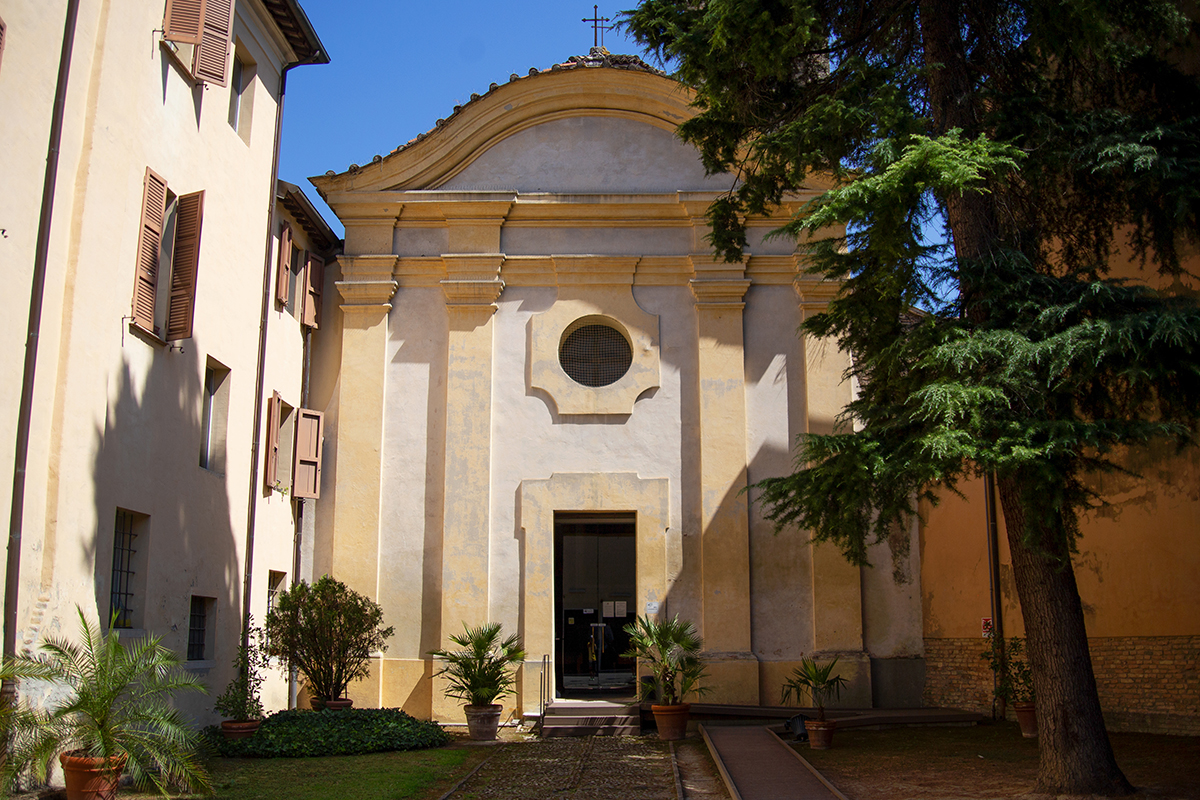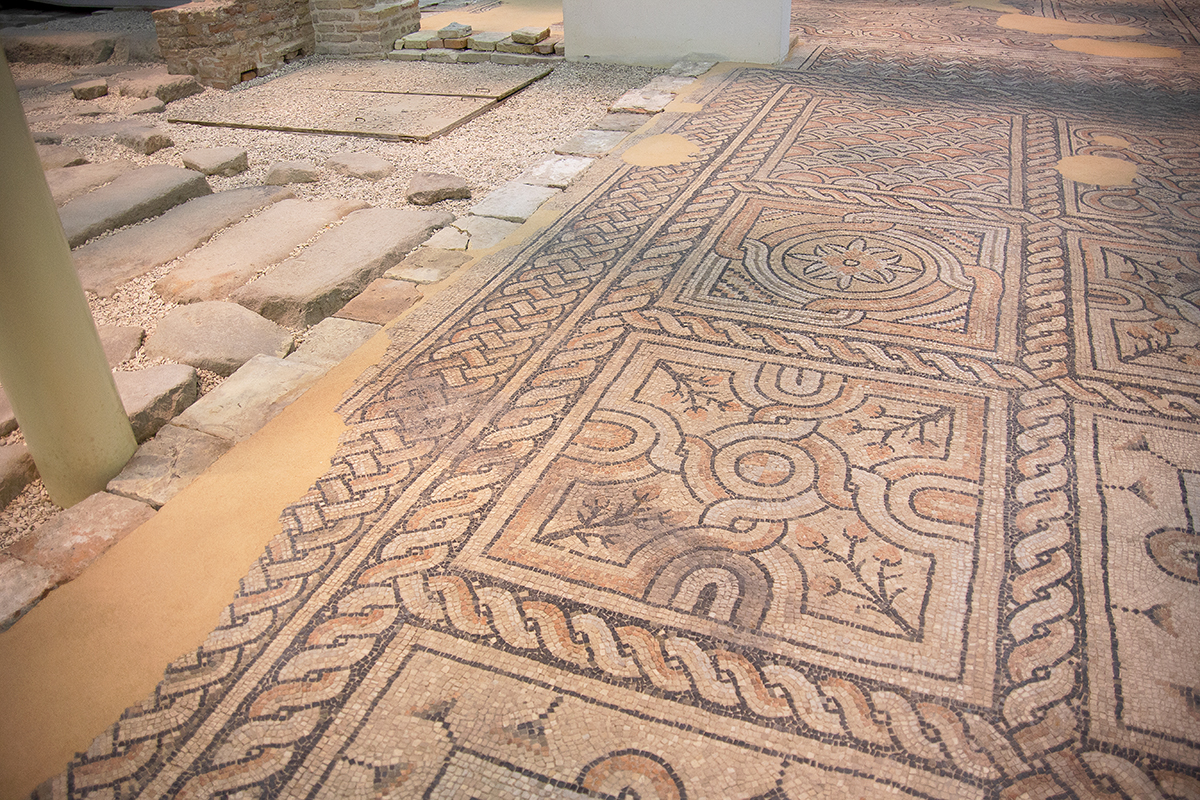Not far from the Basilica of San Vitale, in the basement of the late-baroque Church of Sant’Eufemia, you can visit the stunning DOMUS OF THE STONE CARPETS, considered by many people one of Italy’s most important archaeological sites discovered in the last decades.
Renamed by the critic Federico Zeri during his visit to the site, the area is a prestigious complex of residences dating back between the 1st and the 6th century AD, embellished with “stone carpets” – marble and mosaic floors with a strong decorative value.
A journey through history
Between 1993 and 1994, the Superindentence for archaeological heritage of the Emilia-Romagna region stopped the construction of an underground park in Via D’Azeglio due to the discovery of a complex of buildings dating back between the Roman Republican times and the Byzantine age.
What stood out among the various archaeological stratigraphies was a 700-sqm complex (the so-called “Byzantine palace”) made up of 14 rooms and 2 courtyards.
It is datable to the 6th century AD and – considering the magnificence of the discovered materials – was probably owned by a very rich family of the city.
The excavations brought to light different phases of attentance that cover a very wide time-span ranging from the late-Republican times (with some even more ancient traces, dating back to the 4th-3rd century BC) to these days.
In particular, archaeologists found a number of residences dating back to the period of the High Roman Empire; a thermal plant and a residence of the 1st century; a building of the 4th century; an early medieval residence and a necropolis probably connected to the church, whose foundation served as the basis for the 18th-century Church of Sant’Eufemia.
What to see
Raised walkways allow you to walk around the entire perimeter of the site and admire the wonderful floor mosaics characterising it.
During the set up of the museum, much space was given to the phases of the rich Byzantine residence with the merging of two buildings originally separated by a still visible paved Roman road.
All the spaces of the building were paved with marble inlays or polychromatic tesserae with refined patterns and figured inserts.
Among these ones, you cannot miss the large banquet hall with the mosaic representation of the seasons (Dance of the Geniuses of the Seasons), dancing to the sound of a musician (Pan).
It is possible to identify Autumn from behind, Spring on the left, Winter covered by a hood and a hint of Summer, that unfortunately has gone lost.
In the beautiful, marvellously decorated reception hall, the enlargement created with the mosaic extension beyond the frame of the first flooring is noteworthy.
Noteworthy is also the representation of a shepherd, maybe a Good Shepherd, referring to a more ancient building (see focus).
The Church of Sant’Eufemia
The Church of Sant’Eufemia is located almost in the middle of Via Barbiani.
It was built between 1742 and 1747 on a design by architect Buonamici – the one that also designed the Cathedral – on the foundations of a more ancient paleochristian temple that according to the legend was the seat of the first apostolate of Saint Apollinaris.


